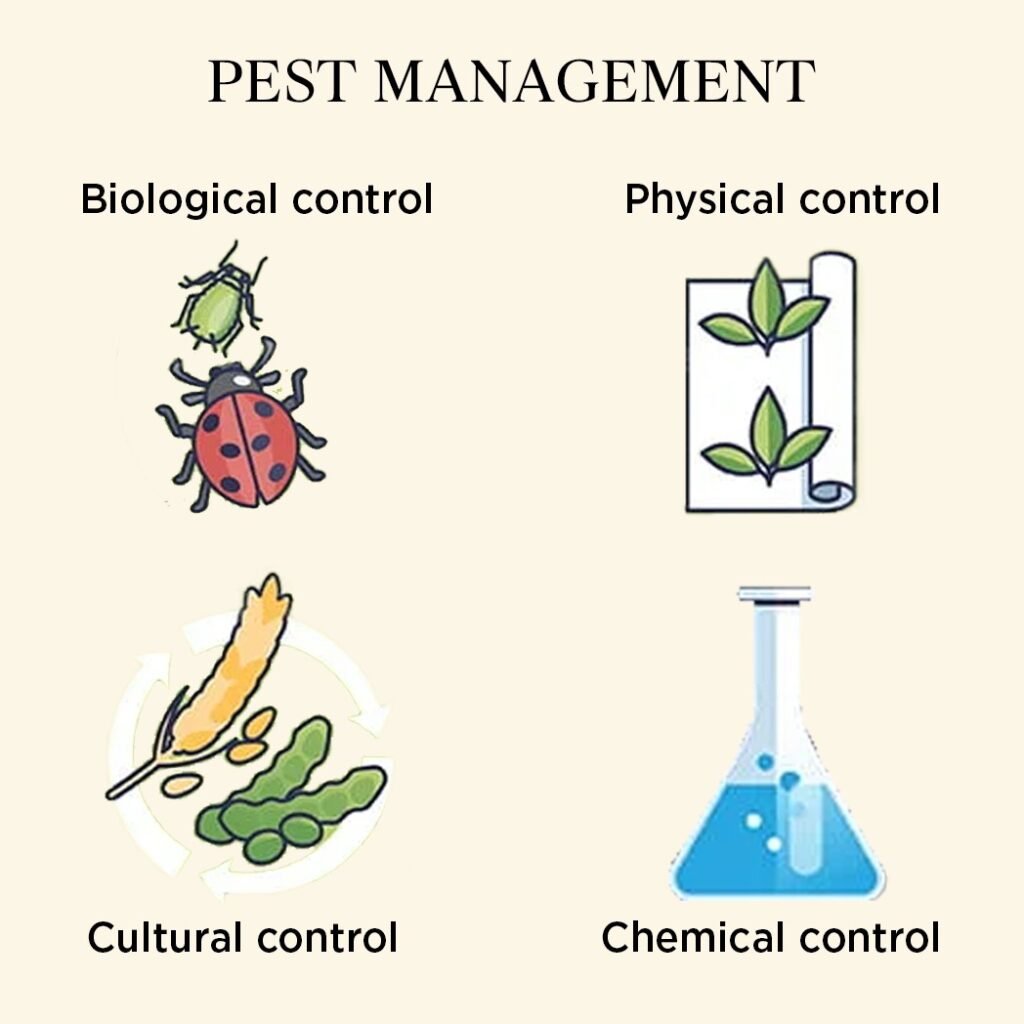
“Understand its worth, treat it with care and give it the love it deserves we might as well make peace with the landlord.”
-Anonymous
In the heart of your garden, nature’s strikes a delicate balance that focuses on the prevention of damage causing pests within. Yet, we are not completely shielded by what nature has to offer. Here, we rely upon the practice known as Integrated Pest Management (IPM). It is an ecosystem based strategy that focuses on the long-term prevention of pests or their damage through a combination of techniques in order to maintain pest populations below an acceptable level. Imagine IPM to be a work of Greek architecture whose foundation comprises 4 pillars namely: cultural, physical, biological and chemical controls. These four pillars of IPM take root and harmonize in a beautiful manner working hand-in-hand to fend off the pests.

Cultural control methods form the backbone of traditional pest management. These techniques encompass a wide range of strategies such as crop rotation and fallowing. Crop rotation involves systematically changing the types of crops grown in a specific area which helps in disrupting pest life cycles. On the other hand, fallowing involves allowing a field to lie idle temporarily which deprives the pests of their host plant. Additionally, the removal and destruction of crop debris prevent pest habitats, diminishing their population
Physical control methods involve blocking pests out by making the environment unsuitable for it. This is the simplest method to follow and is dependent solely on knowledge of pest behaviour. Methods include erecting barriers or screens to block pest access, employing traps or nets to capture pests, and modifying environmental conditions to create an inhospitable environment for pests.
Biological control involves increasing the presence of good bugs within the garden. These good bugs play the role of insect predators as they are natural enemies of the pests present within your garden. Biological control encourages a natural ecosystem where these predators keep pest populations in check while fostering biodiversity within your garden.
Chemical control, though generally seen as a last resort, involves the use of pesticides or chemical substances to manage pest population. These substances can either target specific pests or be broad-spectrum meaning they affect a wide range of organisms. This may cause harm to non-target organisms leading to the disruption of your garden’s ecosystem. Despite their instant impact, chemical controls need to be carefully weighed against their potential long-term consequences.
Each pillar of IPM contributes uniquely to pest control strategies, offering a variety of ways for managing pests while minimizing negative environmental impacts and promoting sustainable practices. Furthermore, it is both cost-effective and efficient as it reduces any costs on pesticides if carried out thoroughly. Within your own gardens, both cultural and biological forms of control play the most crucial role as they align with the ethos of sustainability and effectiveness. Though IPM seems on paper to be a great concept, why do we observe that in India crop yield losses due to pest related issues range from 15-25 percent?
We observe as per the Indian Council of Agricultural Research-National Centre for Integrated Pest Management (ICAR-IPM) that only around 3-5 percent of India’s total agricultural practices include IPM*. This is in spite of the various positive social and environmental impacts it has. As IPM does not resort to usage of chemical pesticides, we see the presence of both an improved environment as well as tangible benefits on human health. Soil and nutrient management, a core aspect of IPM, incorporate strategies like cultural controls, crop rotation, and soil testing to maintain soil health. Another essential part is water management which involves practices like alternate wetting and drying to prevent pest breeding. The positive influences are seen as they mitigate soil-borne diseases and optimize nutrient levels as well as reduction of pesticide residue in water bodies over time.
Within the intricacies of our gardens, IPM stands as a beacon of hope, orchestrating the delicate balance against damaging pests. Embracing IPM means acknowledging the synergy within these techniques and fostering biodiversity ensuring an eco-friendly approach. It embodies sustainable garden care, harmonizing cultural, physical, biological and chemical into a structured framework. Despite its benefits, India’s low adoption of IPM reveals missed opportunities amid pest-related crop losses. Encouraging wider IPM implementation holds the promise of improved yields and environmental preservation – an ode to harmonizing farming practices with nature’s cadence. The promise of IPM lies not just in pest management, but in a profound symphony of ecological balance and agricultural harmony.




